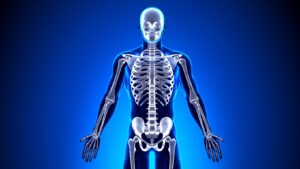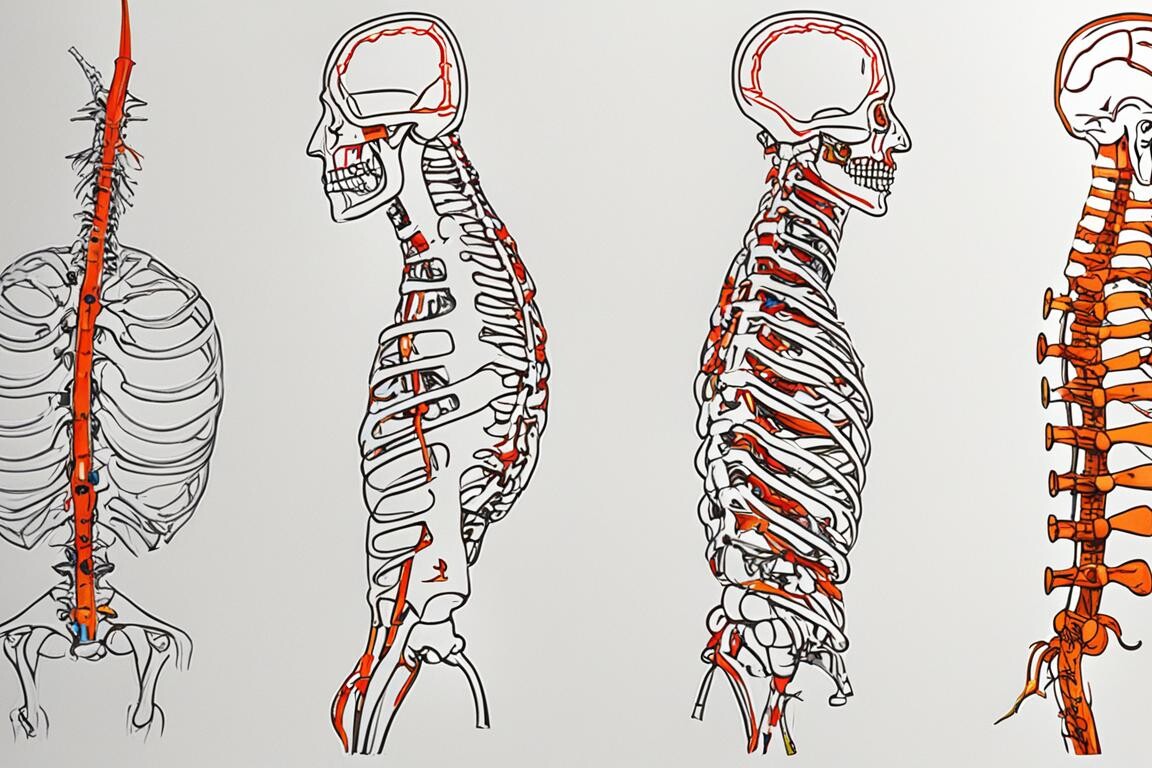Welcome to the informative article series on Brown-Sequard spinal cord injury. In this section, we will provide you with an overview of this rare neurological condition, its impacts, symptoms, and recovery outlook.
Brown-Sequard syndrome is a result of damage to the spinal cord, leading to muscle weakness or paralysis on one side of the body and a loss of sensation on the opposite side. It was first described by scientist Charles-Édouard Brown-Séquard in 1849. The severity of symptoms can vary based on the location and extent of the injury. Treatment and prognosis depend on the cause and may include medication, surgery, and rehabilitation therapies.
Key Takeaways:
- Brown-Sequard syndrome is a rare spinal cord injury characterized by muscle weakness or paralysis on one side of the body and a loss of sensation on the opposite side.
- Symptoms can vary in severity depending on the location and extent of the injury.
- Treatment options for Brown-Sequard syndrome may include medication, surgery, and rehabilitation therapies.
- Prognosis is dependent on the cause and extent of the injury, with timely treatment and rehabilitation leading to significant recovery and improved quality of life.
- Proper diagnosis and evaluation are crucial for effective management and improved outcomes for individuals with Brown-Sequard syndrome.
Table of Contents
ToggleCauses of Brown-Sequard Syndrome
Brown-Sequard syndrome can be caused by both traumatic and non-traumatic injuries. Traumatic injuries, such as gunshot wounds, stabbings, motor vehicle accidents, and falls, are the most common causes. Non-traumatic causes include vertebral disc herniation, spinal tumors, multiple sclerosis, and infections like tuberculosis and meningitis. The syndrome can occur at any level of the spinal cord.
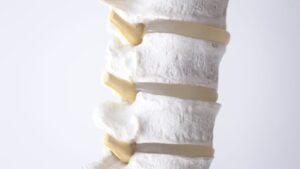
When it comes to traumatic injuries, accidents involving firearms or sharp objects can result in direct damage to the spinal cord, leading to the development of Brown-Sequard syndrome. Additionally, high-impact trauma from motor vehicle accidents or falls can cause spinal cord injuries, resulting in the syndrome.
On the other hand, non-traumatic causes can also lead to Brown-Sequard syndrome. Vertebral disc herniation, a condition where the soft cushions between the spinal vertebrae rupture or bulge, can compress the spinal cord and disrupt its normal functionality. Spinal tumors, whether benign or malignant, can also impinge on the spinal cord, causing damage and subsequent development of the syndrome.
Conditions like multiple sclerosis, an autoimmune disease affecting the central nervous system, can result in demyelination of the spinal cord, leading to the characteristic symptoms of Brown-Sequard syndrome. Furthermore, certain infections, such as tuberculosis and meningitis, can infect the spinal cord, causing inflammation and damage to the affected area, resulting in the syndrome.
Traumatic Causes
- Gunshot wounds
- Stabbings
- Motor vehicle accidents
- Falls
Non-Traumatic Causes
- Vertebral disc herniation
- Spinal tumors
- Multiple sclerosis
- Infections (tuberculosis, meningitis, etc.)
| Traumatic Causes | Non-Traumatic Causes |
|---|---|
| Gunshot wounds | Vertebral disc herniation |
| Stabbings | Spinal tumors |
| Motor vehicle accidents | Multiple sclerosis |
| Falls | Infections (tuberculosis, meningitis, etc.) |
Epidemiology of Brown-Sequard Syndrome
Brown-Sequard syndrome is considered a rare form of incomplete spinal cord injury. In the United States, approximately 11,000 new cases of spinal cord injuries, including incomplete paraplegia and tetraplegia, are reported each year. Estimates suggest that Brown-Sequard syndrome accounts for around 2% to 4% of all traumatic spinal cord injuries.
| Spinal Cord Injury Type | Number of Cases (per year) |
|---|---|
| Brown-Sequard Syndrome | ~2% to 4% of all traumatic spinal cord injuries |
| Incomplete Paraplegia | Unknown |
| Incomplete Tetraplegia | Unknown |
| Total Cases of Spinal Cord Injuries | Approximately 11,000 |
To understand the epidemiology of Brown-Sequard syndrome, it is vital to recognize its rarity in comparison to other types of spinal cord injuries. While thousands of new spinal cord injury cases are reported in the United States annually, Brown-Sequard syndrome represents a small proportion of these incidents.
Pathophysiology of Brown-Sequard Syndrome
Brown-Sequard syndrome occurs as a result of a hemisection or partial injury of the spinal cord. The location of the injury determines the specific sensory and motor deficits experienced by the individual.
Sensory deficits in Brown-Sequard syndrome manifest as a loss of pain, temperature, and crude touch sensation on the side of the body opposite to the injury. This means that if the injury occurs on the left side of the spinal cord, the sensory deficits will be experienced on the right side of the body.
Motor deficits, on the other hand, result in weakness or paralysis on the same side as the injury. So, in the case of an injury on the left side of the spinal cord, the motor deficits will be observed on the left side of the body as well.
It is important to note that Brown-Sequard syndrome not only affects the sensory and motor pathways but also impacts other tracts within the spinal cord, such as the dorsal columns and the spinocerebellar tracts.
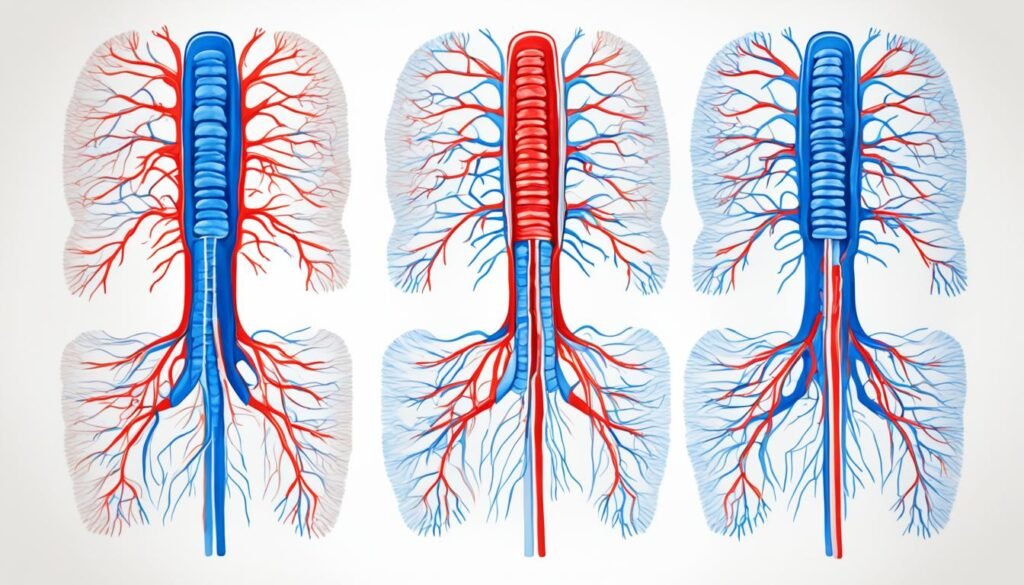
Understanding the pathophysiology of Brown-Sequard syndrome is vital for proper diagnosis and treatment. By identifying the location of the injury and assessing the specific sensory and motor deficits, healthcare professionals can develop effective management strategies to optimize the individual’s recovery and quality of life.
| Impacted Areas | Manifestations |
|---|---|
| Sensory deficits | Loss of pain, temperature, and crude touch sensation on the side opposite the injury |
| Motor deficits | Weakness or paralysis on the same side as the injury |
| Other affected tracts | Dorsal columns and spinocerebellar tracts |
Symptoms and Evaluation of Brown-Sequard Syndrome
The symptoms of Brown-Sequard syndrome can vary in severity, depending on the extent of the spinal cord injury. Common symptoms include muscle weakness or paralysis on one side of the body and a loss of pain, temperature, and crude touch sensation on the opposite side. These symptoms typically result from the hemisection, or partial injury, of the spinal cord.
When evaluating a potential case of Brown-Sequard syndrome, a detailed history and physical examination are crucial. The history helps identify any traumatic or non-traumatic factors that may have caused the injury. The physical exam assesses muscle strength, sensation, reflexes, and coordination.
During the physical exam, the doctor may perform various tests to evaluate the extent of the damage and determine the cause of the syndrome. This may include assessing muscle strength through manual resistance, testing sensation by applying stimuli to different parts of the body, and evaluating reflexes.
In addition to the history and physical exam, diagnostic tests may be ordered to confirm the diagnosis. Magnetic resonance imaging (MRI) can visualize the spinal cord and help identify any abnormalities or injuries. Blood tests may also be conducted to rule out other potential causes of symptoms.
Overall, a comprehensive evaluation, including a detailed history, thorough physical exam, and appropriate diagnostic tests, is essential in diagnosing and understanding Brown-Sequard syndrome.
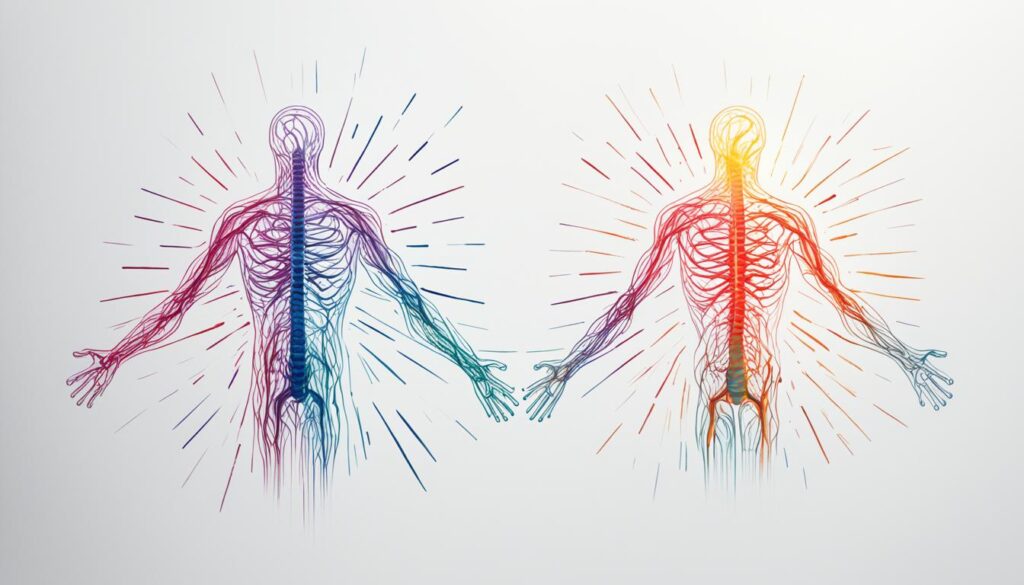
Summary:
- Brown-Sequard syndrome is characterized by muscle weakness or paralysis on one side of the body and a loss of pain, temperature, and crude touch sensation on the opposite side.
- A detailed history and physical examination are crucial for evaluating the extent of the damage and determining the cause of the syndrome.
- Diagnostic tests, such as MRI and blood tests, may be performed to confirm the diagnosis.
Treatment and Management of Brown-Sequard Syndrome
Treatment for Brown-Sequard syndrome aims to address the underlying cause, prevent complications, and improve overall function. The specific treatment approach depends on the individual and the severity of their condition. However, it typically involves a combination of medication, surgery, and rehabilitation therapies.
Medication: In some cases, medication may be prescribed to manage pain, reduce inflammation, and improve nerve function. Steroids, such as prednisone, can help reduce swelling and inflammation in the spinal cord. Prophylactic antibiotics may also be prescribed to prevent infections, which can be a complication of the syndrome.
Surgery: Decompression surgery may be necessary in certain cases of Brown-Sequard syndrome. This procedure aims to relieve pressure on the spinal cord and restore normal function. Surgical intervention is usually considered when there is a significant compression or structural abnormality causing the syndrome.
Rehabilitation: Nonoperative treatment focuses on supporting individuals and improving their quality of life. This typically involves a comprehensive rehabilitation program that includes physical and occupational therapy. These therapies help individuals regain strength, improve mobility, and learn adaptive strategies to cope with the physical limitations caused by the syndrome.
Additionally, assistive devices, such as wheelchairs or braces, may be recommended to enhance mobility and independence. Supportive care for bladder and bowel function is also an essential aspect of the management of Brown-Sequard syndrome.
Treatment Options for Brown-Sequard Syndrome
| Treatment Modalities | Description |
|---|---|
| Medication | Prescription of steroids and prophylactic antibiotics to manage pain, reduce inflammation, and prevent infections |
| Surgery | Decompression surgery to relieve pressure on the spinal cord and correct structural abnormalities |
| Rehabilitation | Physical and occupational therapy to improve mobility, strength, and independence; use of assistive devices and supportive care for bladder and bowel function |
Differential Diagnosis and Prognosis of Brown-Sequard Syndrome
When evaluating a patient with suspected Brown-Sequard syndrome, it is essential to consider other conditions that may present with similar symptoms. The differential diagnosis for Brown-Sequard syndrome includes:
- Stroke: A cerebrovascular event can cause unilateral weakness and sensory deficits, but the distribution of deficits differs from Brown-Sequard syndrome. Imaging studies, such as a CT scan or MRI, can help differentiate between the two.
- Tumors: Spinal cord tumors, such as intradural extramedullary and intramedullary tumors, can also produce symptoms similar to Brown-Sequard syndrome. Diagnosis typically involves imaging studies and possibly a biopsy.
- Other Spinal Cord Injuries: Various types of spinal cord injuries, such as cervical spondylotic myelopathy or central cord syndrome, may present with similar symptoms. Additional testing, including imaging and neurological examinations, can help in distinguishing between these conditions.
The prognosis for individuals with Brown-Sequard syndrome depends on several factors, including the cause and extent of the injury. With timely and appropriate treatment, the majority of patients can experience significant recovery and improved function. In fact, studies have shown that more than 90% of individuals with Brown-Sequard syndrome can regain bowel and bladder control and the ability to walk without assistance when provided with comprehensive rehabilitation and management.
However, it is important to note that complications can arise if Brown-Sequard syndrome is left untreated or if there are delays in diagnosis and treatment. Common complications include low blood pressure due to autonomic dysfunction and an increased risk of infections, such as urinary tract infections and respiratory infections. Early intervention and ongoing medical management can help prevent these complications.
Overall, a prompt and accurate differential diagnosis, along with timely treatment and rehabilitation, is crucial for optimizing the prognosis and quality of life for individuals with Brown-Sequard syndrome.
Conclusion
In conclusion, Brown-Sequard syndrome is a rare spinal cord injury that can have significant impacts on an individual’s mobility and sensory functions. It is characterized by muscle weakness or paralysis on one side of the body and a loss of sensation on the opposite side. The syndrome can be caused by various traumatic and non-traumatic injuries, such as gunshot wounds, falls, spinal tumors, and multiple sclerosis.
Diagnosing Brown-Sequard syndrome involves conducting a detailed history, physical examination, and diagnostic tests, including MRI scans and blood tests. Once diagnosed, the treatment options for Brown-Sequard syndrome depend on the underlying cause and may include a combination of medications, surgical interventions, and rehabilitation therapies.
The prognosis for individuals with Brown-Sequard syndrome can vary based on the extent of the injury and the timeliness of treatment. However, with appropriate medical care and management, a significant recovery with improved quality of life is possible for most individuals. It is important for individuals diagnosed with Brown-Sequard syndrome to work closely with their healthcare team to develop a comprehensive treatment plan and optimize their chances of a successful outcome.
In summary, early diagnosis, prompt treatment, and ongoing rehabilitation play crucial roles in the overall prognosis and recovery outlook for individuals with Brown-Sequard syndrome. With the right medical interventions and support, individuals can regain function, manage symptoms, and improve their daily lives.
FAQ
What is Brown-Sequard syndrome?
Brown-Sequard syndrome is a rare neurological condition resulting from damage to the spinal cord. It is characterized by muscle weakness or paralysis on one side of the body and a loss of sensation on the opposite side.
Who first described Brown-Sequard syndrome?
Brown-Sequard syndrome was first described by scientist Charles-Édouard Brown-Séquard in 1849.
What are the causes of Brown-Sequard syndrome?
Brown-Sequard syndrome can be caused by both traumatic and non-traumatic injuries. Traumatic injuries, such as gunshot wounds, stabbings, motor vehicle accidents, and falls, are the most common causes. Non-traumatic causes include vertebral disc herniation, spinal tumors, multiple sclerosis, and infections like tuberculosis and meningitis. The syndrome can occur at any level of the spinal cord.
How common is Brown-Sequard syndrome?
Brown-Sequard syndrome is considered a rare form of incomplete spinal cord injury. In the United States, approximately 11,000 new cases of spinal cord injuries, including incomplete paraplegia and tetraplegia, are reported each year. Estimates suggest that Brown-Sequard syndrome accounts for around 2% to 4% of all traumatic spinal cord injuries.
What are the symptoms and evaluation procedures for Brown-Sequard syndrome?
Symptoms of Brown-Sequard syndrome can range from mild to severe, depending on the extent of the injury. Common symptoms include muscle weakness or paralysis on one side of the body and a loss of pain, temperature, and crude touch sensation on the opposite side. A detailed history and physical exam are crucial for evaluating the extent of the damage and determining the cause of the syndrome. Additional diagnostic tests, such as MRI and blood tests, may be performed to confirm the diagnosis.
What are the treatment options for Brown-Sequard syndrome?
Treatment for Brown-Sequard syndrome depends on the underlying cause and aims to prevent complications and improve function. Medications, such as steroids and prophylactic antibiotics, may be prescribed. In some cases, decompression surgery may be necessary. Nonoperative treatment focuses on supporting individuals and improving their quality of life. This may include the use of assistive devices, physical and occupational therapy, and supportive care for bladder and bowel function.
How is Brown-Sequard syndrome diagnosed and what is the prognosis?
Differential diagnoses for Brown-Sequard syndrome include stroke, tumors, and other spinal cord injuries. A careful history and physical exam can help differentiate between these conditions. The prognosis for individuals with Brown-Sequard syndrome varies depending on the cause and extent of the injury. With timely treatment and rehabilitation, more than 90% of individuals can regain bowel and bladder control and the ability to walk without assistance. Complications, such as low blood pressure and infections, can occur if the syndrome is left untreated.
Can individuals with Brown-Sequard syndrome recover?
With appropriate treatment and management, most individuals with Brown-Sequard syndrome can experience significant recovery and improved quality of life.
Source Links
About The Author

This article is medically reviewed by Dr. Chandril Chugh, Board-Certified Neurologist, providing expert insights and reliable health information.
Dr. Chandril Chugh is a U.S.-trained neurologist with over a decade of experience. Known for his compassionate care, he specializes in treating neurological conditions such as migraines, epilepsy, and Parkinson’s disease. Dr. Chugh is highly regarded for his patient-centered approach and dedication to providing personalized care.
→ Book a consultation to discover which remedies suit your needs best.

